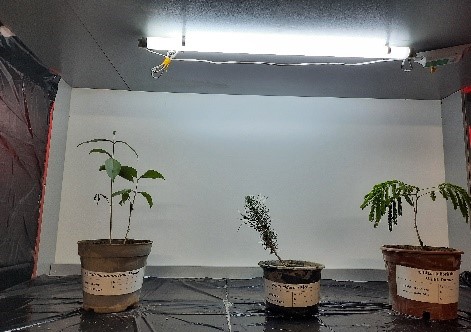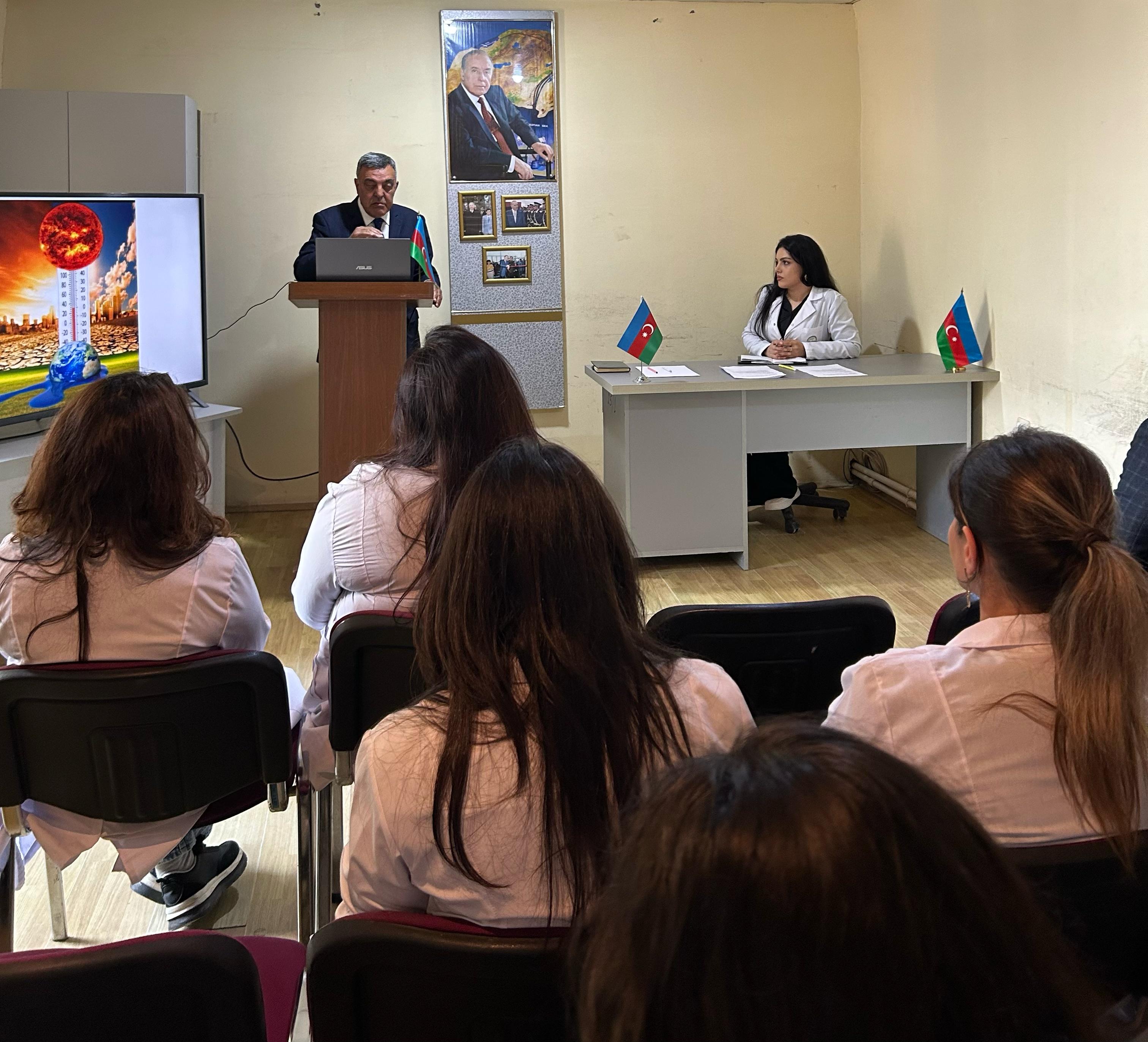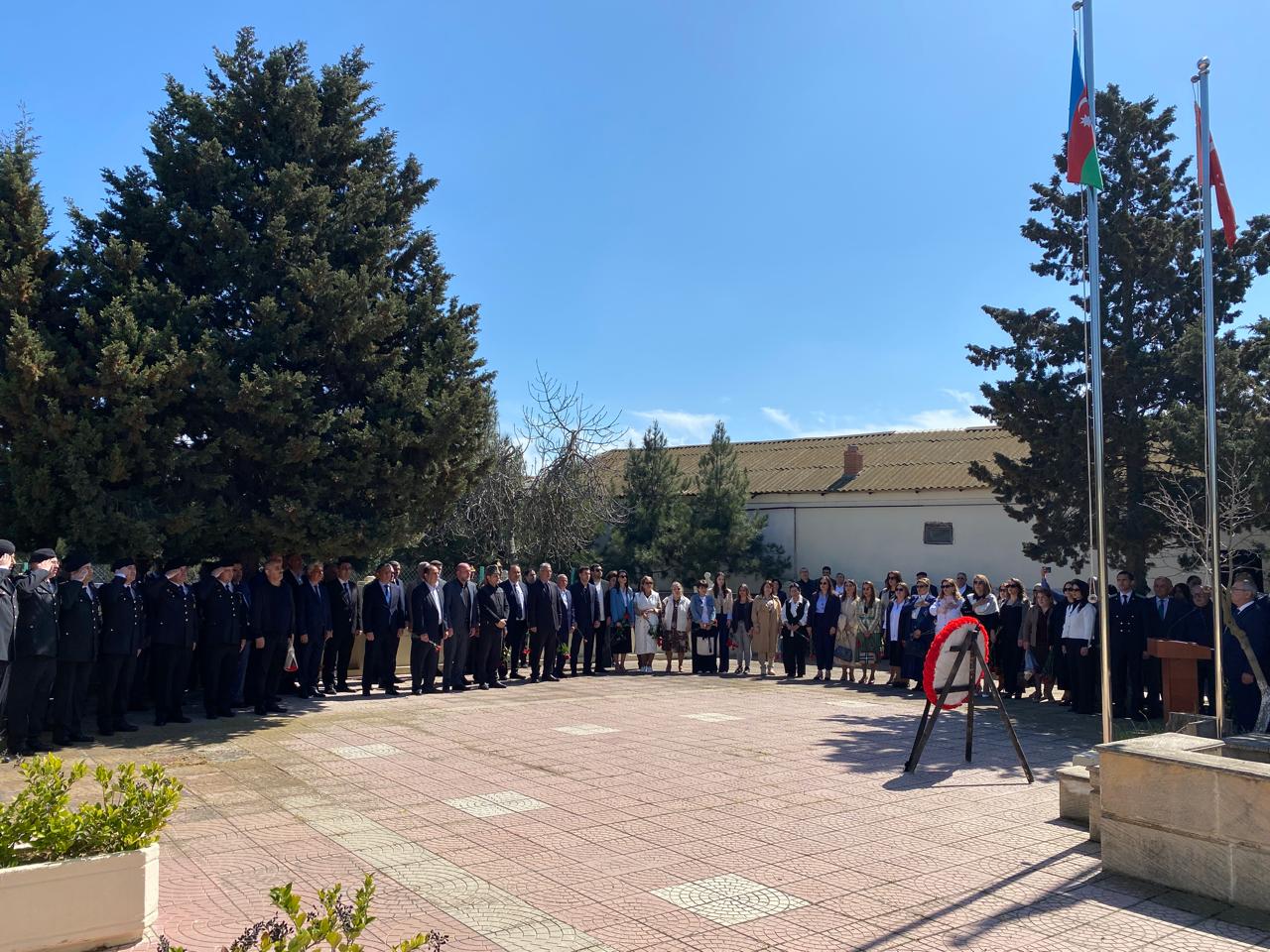Apply to "Green method" in technogen (manmade) polluted territories of Absheron Peninsula
Currently, the main influence among environmental pollutants is the anthropogenic factor. The most manmade polluted lands in our republic are found on the Absheron Peninsula, where two-thirds of the country's industrial potential and one-third of its population are concentrated, and about 30,000 types of pollution are known within the territory.
Recently, despite the development of technology and the introduction of new modern cleaning facilities, the environment continues to be polluted with chemical waste, including heavy metals. Preserving the ecological balance and reducing the possibility of the body coming into contact with excessive amounts of heavy metals is a very urgent issue in our modern times.
The current state of the modern soil structure shows that the useful land areas of the area have been subjected to anthropogenic influence on a large scale and polluted to varying degrees. This effect has caused surface and deep pollution of soils, changes in morphological-genetic characteristics, physico-chemical properties, and decrease in fertility. The most toxic elements in the Absheron peninsula are B, No, Hg, Al, Pb, Cl, Y, Se, Fe, S, Na, Mg. The highest concentration of them is attributed to B and Mo.
The use of heavy metals in industry is very diverse and wide spread. That is why, as a rule, phytotoxicity and harmful accumulation in soils are observed near enterprises. Heavy metals accumulate in the upper humus horizons of soil and are slowly removed through leaching, consumption by plants, and erosion.
The alkaline environment of humus and soil helps to absorb heavy metals. Cu, Pb, Zn, Cd, etc. The toxicity of heavy metals such as heavy metals accumulate less in the reproductive organs of plants than in their vegetative organs, which is closely related to the characteristics of the species and varieties of the cultivated plants. Also, heavy metals have a great role in the body, but their intensive distribution in the biosphere, atmosphere and high concentration in the soil lead to their toxicity for biota.
It was determined that Cd, Pb and Hg elements have a stronger toxic effect on the human body. Lead (Pb) can cause various diseases in the cardiovascular and nervous system, mercury (Hg) in protein and fermentation activity, cadmium (Cd) in the respiratory tract and digestive system.
A number of countermeasures are implemented against soil pollution with heavy metals. Since man-made pollution increases the possibility of soil acidification, the application of organic matter, clays and limes helps to some extent in combating this pollution.
Also, removal of the contaminated layer and its burial, inactivation or reduction of the toxic effect of pollutants using ion-exchange resins, organic substances that form chelate compounds, neutralization and treatment of groundwater, prediction of the migration of the soluble form of heavy metals, elimination, some, especially heavy. In some cases, the main measures are to completely remove the soil layer and replace it with a new one.
One of the methods of recultivation of areas contaminated with heavy metals is the method of soil washing. Applied to excavated soil, it is a highly effective technology that combines physico-chemical and extraction methods in removing organic, heavy metals, and radioactive pollutants from soil. This water-based method relies on mechanical processes to separate contaminants from soil or the solubility of contaminants. At the end of the process, pollutants are released and concentrated in the volume of 5-40% of the soil, and the concentrated part is cleaned by other methods. In other words, the process is not a process that eliminates pollutants, but a method that concentrates them, significantly reducing their volume and indirectly lowering the financial cost of other methods.
Phytoremediation is the most promising and more economically efficient method in the treatment of man-made polluted areas, in contrast to traditional methods of neutralization. Applying this method requires only traditional agricultural practices, so there is no need to build special facilities or train trained personnel to implement it. This method does not consume electricity, and polluting emissions of greenhouse gases do not enter the atmosphere. It is evaluated as a set of methods of cleaning water, soil and atmospheric air using green plants.
Planting, mowing and removal of some crops, such as alfalfa, significantly reduces the concentration of heavy metals in the soil. This method is completely environmentally friendly. Hyperaccumulator plants are mainly used in soil purification by phytoremediation method. Hyperaccumulator plants are plants that can accumulate 50 to 500 times more metals in their leaves, branches, and stems than the ratio of metals in the soil.
These plants can contain 100-1000 times more organic matter than non-hyperaccumulator plants. Heavy metals absorbed from the soil by plants are either stabilized in the soil or removed from the soil. The number of hyperaccumulator plants, which make up 0.2% of flowering plants, is up to 450. Thlapsi L., Urtica L., Taraxacum officinale L. Weber, Chenopodium L., Polygonumsachalase W.H. A number of plant species from the genus Brewer and Allyssum L. have the capability to store heavy metals such as Cd, Cu, Zn, Ni, Pb in their organisms. Also, Brassica juncea Czern., Solanum nigrum L., Fagopyrum esculentum Moench., Glycine max L., Oenothera picensis L., Noccaea caerulescens F.K.Mey., Hydrilla verticillata Royle., Dactylis glomerata L., Azolla pinnata R.Br. and so on. Cultivation of such species can be applied as an alternative method in cleaning man-made polluted soils biological purification of soil from heavy metals with the help of medicinal plants is one of the widespread methods.
In the proposed phytoremediation method, boric acid is introduced into the soil in low doses (0.1-1.0 kg/ha), which allows to increase the removal of heavy metals from contaminated soil by remedial plants tenfold and to regulate the removal of certain substances. Reduction of lead mobility in soils, application of zeolite, combined application of lime and organic fertilizers lead to the most effective measures.
The use of a full range of chemical meliorants (organic and mineral fertilizers, lime and organic substances) reduces the amount of polyvalent metals in the soil by 10-20%. Research on the absorption, transport and storage of heavy metals by plants is driving the development of transgenic plants. The results obtained in the investigation of the structure of genes or proteins of plants to be used for phytoremediation method will accelerate the use of alternative plants for the treatment of areas contaminated with heavy metals and natural pollutants.
For the purpose of applying the phytoremediation method, the employees of the "Ecology and Acclimatization" laboratory chose the oil-contaminated areas of Balakhani settlement of Sabunchu district as a research site. The long-term exploitation of oil fields in these areas has created deep man-made changes in the environment and its natural landscapes. The vegetation of the area mainly consists of some species of the genus Davitika. Humus-rich, underdeveloped soils are extremely poor in terms of humus. In the 0-25 cm layer, its amount is 2.17%, as the depth increases, this indicator decreases to 0.62%. The amount of nitrogen can vary up to 6.9%. The amount of carbonates (CaCO3) in gray-brown undeveloped soils is 6.32% in old contaminated soil, and more as the depth increases. Total absorbed bases in soil ranged from 35.43 to 27.20 mg-eq at 0-20 cm depth. In the absorbing complex, Mg2+ is more abundant, 17.93 mg-eq at 0-20 cm, which is 48.63-56.54% of the total absorbed bases. The amount of Ca2+ in the upper part of the profile is also quite high, it is 46.28-36.83%, and it decreases to the parent rock. Pollution on the top surface of the soil penetrates down to the lower layers along the profile. This also affects the flora. Accumulated residues cause irreversible problems over time.
Using the soil samples brought from the territory polluted by heavy metals, the laboratory staff selected six plant species that they considered more promising (Hibiscus syriacus L., Genista hispanica L., Caesalpinia gilliesii D. Dietr., Albizia julibrissin Willd. Durazz.., Olea europaea L. , Pinus eldarica Medw.) planted in pots and placed in cameras in various light spectrums. Research work is pursued.




